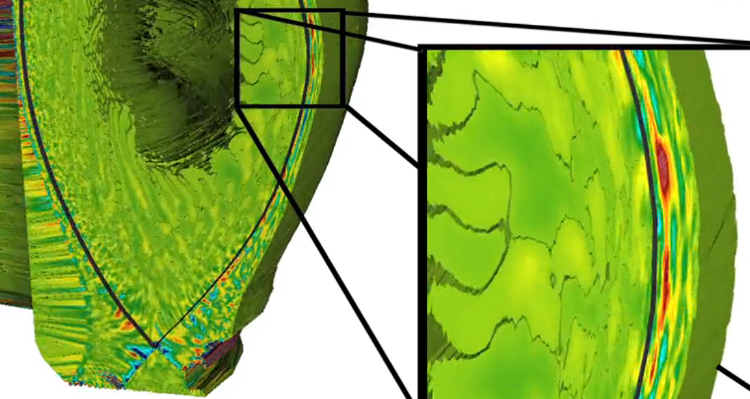
U.S. Department of Energy (DOE) has selected the XGC code in Early Science programs for optimization on three powerful new supercomputers, which will serve as forerunners for even more powerful exascale machines that are to begin operating in the United States in the early 2020’s.
XGC is a dynamic fusion code led by physicist C.S. Chang of Princeton Plasma Physics Laboratory (PPPL) that simulates behavior of the ions, electrons and neutral atoms in the transport barrier region (aka pedestal) between the ultra-hot core of the plasma that fuels fusion reactions and the cooler and turbulent outer edge of the plasma. The pedestal must be high and wide enough to prevent damage to the divertor plate that exhausts heat in doughnut-shaped tokamaks that house the fusion reactions. The pedestal design is key prerequisite for achieving steady state fusion.
XGC also participates in a PPPL-led Exascale Computing Project that will integrate it with GENE, a code developed at the University of California, Los Angeles, to create the first simulation of a complete fusion plasma.
The mentioned new pre-exascale supercomputers are:
- Cori is fully installed at the Lawrence Berkeley National Laboratory. It has a theoretical peak speed of 30 petaflops per second on scientific applications using Intel Xeon “Haswell” and Xeon Phi “Knights Landing” processor nodes.
- Summit is to be operational at Oak Ridge National Laboratory in 2018. Summit features a hybrid architecture consisting of IBM Power 9 processors and multiple NVIDIA Volta graphic processing units and will be capable of performing up to at least 200 petaflops for a wide range of applications.
- Aurora, scheduled to be deployed in 2018 at Argonne National Laboratory, will be comprised of third generation Intel Xeon Phi “Knights Hill” many-core processors. It is expected to be capable of performing up to 200 petaflops on a wide range of scientific applications.
Source: HPCwire
